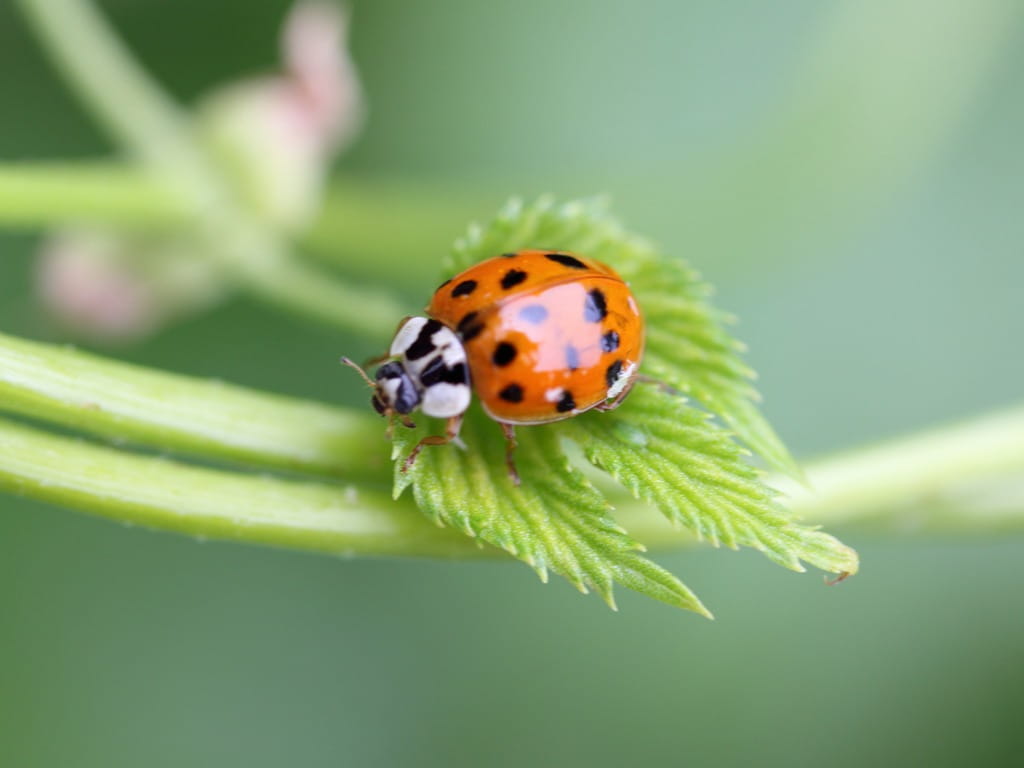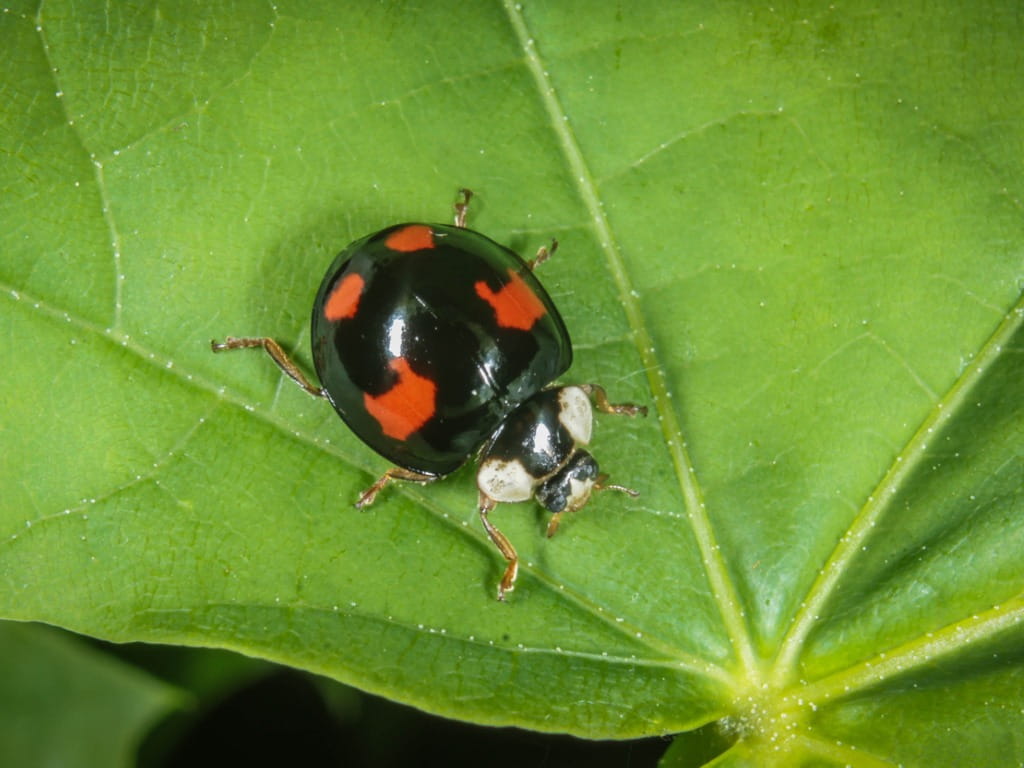Asian Lady Beetles

The Bottom Line
Asian lady beetles (Harmonia axyridis) were introduced by the US Department of Agriculture to help control crop pests like aphids. Although they were invited guests, they have become branded as an invasive species and household pests. Asian lady beetles can bite, but they are not venomous.

What is an "Asian lady beetle"?
The Asian lady beetle (Harmonia axyridis), also known as the “multicolored Asian lady beetle” (MALB) or "ladybug", was first introduced in California by the US Department of Agriculture to help control crop pests like aphids. It took a few attempts to establish them, but the transplant was eventually successful. Although they were invited guests, unlike fire ants and stinkbugs, they have become branded as an invasive species and household pests.
We often think of the characteristic red beetles with black spots, but the MALB can present in yellow, orange, black, and other colors. In the 1990s, there was a large increase in the MALB population noted in Louisiana. Many believed that this was due to an accidental release of stowaway beetles from a cargo ship, but others maintained that it was the result of a biological experiment gone wrong. No one truly knows.
Is it ladybug or ladybeetle?
Both terms are acceptable. In Britain, ladybird is used most often. “Ladybugs” are not bugs (order Hemiptera), they are beetles (order Coleoptera). Beetles developed down a different evolutionary path and have different characteristics. For example, bugs eat a liquid diet with their sucking mouth parts and beetles can eat bugs, molds, and pollen with their chewing mouth parts.
Are ladybugs harmful?
Native ladybugs also control pests very well, and they are gentle and harmless. The Asian lady beetle is known to be more aggressive. This does not mean that they will chase down humans. The label “aggressive” mostly refers to their appetite. They are able to out-compete native species for food, and they also eat native ladybug eggs. MALBs can bite people. Although almost all beetles can bite people, native ladybugs are not known to do so. The MALB bite is described as a pinching feeling. Fortunately, MALBs do not have venom. However, they can release a liquid when they are bothered or crushed. This yellow liquid is hemolymph (the insect equivalent of blood) and is released from their leg joints. The liquid smells bad and is apparently intended to deter predators; this process is called “reflex bleeding.” This can be particularly bothersome because MALBs like to hibernate indoors over winter in large groups. In contrast, native ladybugs stay outside and are more solitary. There have been reports of MALB infestations causing allergic symptoms and worsening of asthma as well as leaving behind lots of yellow stains. The hemolymph can be irritating to the mouth if an MALB is ingested or if it gets on the skin. Rinse out the mouth with water, and wash exposed skin with soap and water.
While Asian lady beetles protect crops by eating pests, the reflex bleeding has become a problem during grape harvesting for wine. As the MALBs are crushed along with the grapes, the hemolymph can contaminate the grape juice and cause a bad taste.
If you have a worrisome exposure to Asian lady beetles, get help from Poison Control. Get an immediate personalized recommendation online or call 1-800-222-1222. Both options are free, confidential, and available 24 hours a day.
Pela Soto, PharmD, BSHS Pharmacogenomics, BS Microbiology
Certified Specialist in Poison Information
Poisoned?
Call 1-800-222-1222 or
Prevention Tips
- Do not let children handle or “collect” insects.
- If an Asian lady beetle lands on you, blow on it to gently usher it away. Do not crush it.
- Wash your hands with soap and water if you feel that you have been bitten.
This Really Happened
A 48-pound dog was brought to a veterinarian because of a “foul odor emanating from the mouth.” They found 16 multicolored Asian lady beetles stuck to the roof of the dog’s mouth. There might have been more earlier, as the dog could have swallowed some. The dog had chemical burns in its mouth. The veterinarian interviewed the owner to see if there could have possibly been other chemicals available to the dog, but there were none known. The beetles were removed and the dog made a full recovery. Though the exact chemical makeup of the fluid emitted by the beetle was not known, the authors believe that at least one of the problematic components is a piperidine, which are severe irritants that have a characteristic pepper-like odor (Stocks & Lindsey 2008).For More Information
References
Yarbrough, JA, Armstrong JL, Blumberg MZ, Phillips AE, McGahee E, et al. Allergic rhinoconjunctivitis caused by Harmonia axyridis (Asian lady beetle, Japanese lady beetle, or lady bug). J Allerg Clin Immunol. 1999 Sep;104(3 pt 1):704–5.Poisoned?
Call 1-800-222-1222 or
Prevention Tips
- Do not let children handle or “collect” insects.
- If an Asian lady beetle lands on you, blow on it to gently usher it away. Do not crush it.
- Wash your hands with soap and water if you feel that you have been bitten.
